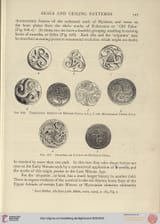>>17930362
They used it more in the Triskelion-style like the Basques, which probably symbolized the palace/labyrinth, snake goddess or the serpent itself.
>The term labyrinth derives from 'labrys', which was a double-sided axe used by Cretan priestesses for ceremonial purposes. The primary goddess worshipped in Knossos was Potnia, an earth mother goddess archetype at the top of the Minoan pantheon. A Linear B tablet discovered in Knossos associates the labyrinth with the goddess Potnia, through the line, 'Mistress of the Labyrinth’, Potnia meaning Mistress, or 'Potnia of the Labyrinth'. Thus the Minotaur could be taken to be Potnia's bull, as it would seemingly be her labyrinth
The snake/labyrinth goddess's Minoan name may be related with A-sa-sa-ra, a possible interpretation of inscriptions found in Linear A texts. Although Linear A is not yet deciphered, Palmer relates tentatively the inscription a-sa-sa-ra-me which seems to have accompanied goddesses, with the Hittite išhaššara, which means "mistress". The term labyrinth derives from 'labrys', which was a double-sided axe used by Cretan priestesses for ceremonial purposes. The primary goddess worshipped in Knossos was Potnia, an earth mother goddess
>Pelasgian creation myth involving Ophion as a serpent created by a supreme goddess called Eurynome dancing on the waves. She is fertilized by the serpent and in the form of a dove lays an egg on the waters about which Ophion entwines until it hatches and the world issues forth. Then Ophion and Eurynome dwell on Mt. Olympus until Ophion boasts that he made the world alone. Eurynome, as punishment, kicked out his teeth and banished him to the underworld. From Ophion's teeth sprang Pelasgus who taught man all the arts and crafts
